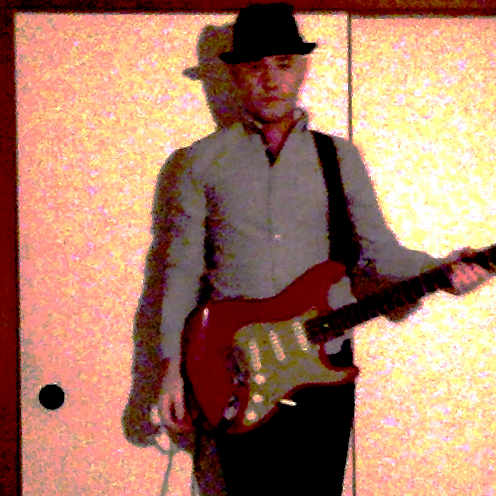29 August 2017

Breaking down five tracks I remember loving as a kid
Rhythm Heritage / Michael Omartian: Theme from SWAT
Oh come on – those disco hats! Are you kidding me…? And the horn stabs… OH! That bass piano riff is absolutely fantastic. Of course I love the chicka wah guitar and ringing high funk chords. Descending / ascending counter lines with strings and trumpets, repeated motif breakdown with a juicey envelope bass; Siren sound -? Drum fills – the seventies kit sound is really appealing. So much to like here. Interesting the piano loop is pretty relentless and gorgeous – and the way it breaks the loop through a figure and pulls all the instrumentation together. Superb.
ABBA: Dancing Queen
Again the disco hats, and unison singing. I like the chorus start – that’s really a hallmark of ABBA, right? (???) Again the piano is driving a lot of the melody – but the synth string sound and the way the strings play into the chorus – a lovely build. The chorus is pretty extended too, right? I mean there’s changes everywhere, and the melody keeps developing… SO MANY HOOKS….
There’s a gnarly delay in the mix I’d never noticed – and pulling back to the dark strings in the second verse is a masterstroke. So Singable. That repeated piano figure is repeated a lot.
Glen Campbell: Rhinestone Cowboy
Wow. The kick is really boxy and dry – snare too. Vocal quite dry too. Tambourine is beautifully echoey. Piano and guitar sitting really close together – strings driving so much of the uplift. Vocal opening up reverb wise in the chorus. That descend out of the chorus – bass, piano and strings across 4 bars – really gives the track pause and room. Also cutting back the strings and the instrumentation in the pre-chorus. Lovely mixing. And repeated chords after the vocal motif. Wide acoustic in the pre-chorus, narrowing for the chorus. A simple vocal line repeated clearly – It’s a cool thing, right? A rhinestone cowboy? It sounds a little like a cookie brand. But in a good way.
On a side note Wichita Lineman – that baritoney guitar tremolo solo is fantastic – and the way he sings this – along with the repeated synth figure that sounds like a telegraph… What a glorious track. Jimmy Webb. My goodness.
Neil Diamond: Jonathon Livingstone Seagull – Be
Simple repeated string bass, piano and synth swells – taking its time to develop. Bringing in extra strings and widening for the chorus. Upping the tempo through the introduction of the drums halfway through the chorus. And this string break! Simple motif played against more rhythmic and string elements.
And also the strummed guitar – adds a really needed percussive element. And the big breakdown takes the solo motif and develops it symphonically – so grand, leading into the full kit and crashes, and deep horns… Pairing back to violins only. There’s a genuine leisure and super enhanced dynamic – it needs to be I guess to carry itself into cinema. Oboes and violas and chimes and gongs. It really does convey a kind of dappled windswept majesty – to steal from Hopkins.
Roxy Music: Avalon
I’ve been thinking about this synth sound a lot lately – Jupiter 8. I love the tremolo – high and wide and panned to the right. I also love the left turn of the whole ‘dancing, dancing’ interlude. That segue is pretty dreamy. Almost goes without saying his voice sounds fantastic and the reverb is perfect. Also the guitars running up into the chorus. The bass and the synths strings kind of stay close together. The female vocals at the end, singing a more random harmony line – a little tangential, again. The elements that keep it tight are that skank guitar, the bass, and the simplicity of the drums.
Strategy /takeaways
Obviously I’m not about to go all ABBA or Glen Campbell for the new album or start wearing flares, but the re-visit / the randomness does throw certain things to light I would otherwise have overlooked… And the question of ‘Why did I think of these songs now?’ is one that bears at least keeping in mind. Here’s some things I’ve noticed for further exploration:
- All the tracks have a significant non-vocal aspect, whether it be the instrumental of SWAT, or the extended coda of Avalon, there’s obviously something to learn here for me about letting the song develop without the need to sing something
- Both Avalon and Jonathan Livingston Seagull (and the sneaky extra Wichita Lineman) have a pretty epic and open feel coupled with an awesome dynamic… a wide screen picture rather than a hotel room sketch
- Disco hats, tambourines, skanky guitar lines and percussive strummed acoustics, eighties synths and an emphasis on rhythm… all noteworthy takeaways
- The seventies drum kit and studio sound of the Theme from SWAT I find really appealing, along with the reverbs and synth choices of Avalon
- While I’m writing this, youtube has gone on to play Roxy Music’s Jealous Guy. What a gorgeous track that is too… I’ve never really been a Roxy Music fan… but the whistling at the end? And the tremolo guitars? And the pacing, again, is impeccable. See what I did there? Snuck another song in, huh?
